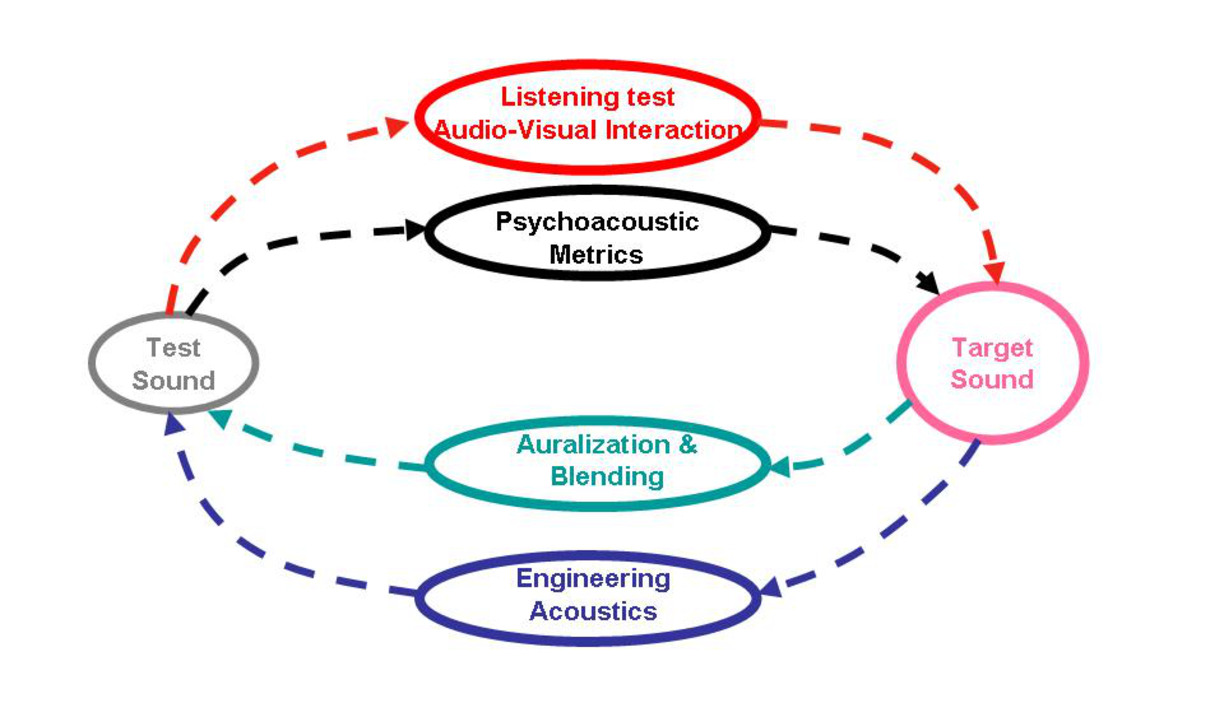Sound Quality
A product’s sound quality describes how well the sound is adapted to a specific goal and/or context (Blauert 1996). The research focuses on the use of psycho-acoustic measurements to characterize the sound quality, noise disturbance and directional hearing. The research is mainly applied and has among others been used to optimize and characterize the sound of diesel engines, household products, freight trains, control room environment, hearing protection, saxophone sounds, etc..
The work method for sound quality optimisation comprises the following main elements:
- Sound characterisation; understanding of how sound is generated and detailing of what is important to the sound character.
- Binaural techniques; binaural recording and auralisation and modification of the sound character by means of filtering in order to define alternative product sounds.
- Listening tests; juries subjectively evaluate different sound characters. The test sounds include both recorded sound from prototypes, competing product sounds, and electro-acoustically modified sounds.
- Psychoacoustic measurement models that characterise the optimum sound signal as a function of psychoacoustic indices, for example loudness, sharpness, tonality, and roughness.
Research
Research focuses on the use of so-called psychoacoustic measurement quantities to characterise sound quality, noise disturbance, and directional hearing. The research carried on is mainly applied and has been used among other things to optimise and characterise the noise from diesel engines, household appliances, freight trains, control room environments, hearing protectors, and the sound made by saxophones.
Ongoing research projects:
- Sound quality as regards transient sounds
- Quality of communication for pupils with impaired hearing
- Sound quality of level-dependent hearing protectors
- Over-sensitivity to sound in autistic children
Planned research projects
The measurement quantities (loudness, sharpness, roughness, fluctuation rate, and tonality) are based on monaural measurement (measurement using one microphone) of the variation in acoustic pressure. In order to describe sound signals to a greater extent from the human point of view, binaural measurement (measurement using two microphones mounted inside an artificial head) and signal processing are needed. This makes it possible, for example, to better describe tone components in sound fields generated by several sources/reflections. Another field of application is to define measurement quantities that can be used as measures of sound reproduction quality using multi-channel techniques.

Sound design
The methodology for sound design aiming to optimize sound quality of a product or environment. The methodology is sub-divided in four steps:
- The first step focus on aspects as: source mechanism, structure borne sound, sound radiation and control. This step requires experimental analysis using FFT-based measurements techniques.
- The second step is related to aurally adequate reproduction of the sound. The used sound stimuli are typically based on binaural recordings or near field recordings, composed to produce a virtual target sound, by filtering and blending.
- The third step is evaluation of the subjective qualities of a selected number of product sound stimuli by listening tests. Appropriate scaling methods, test procedures, selection of a representative jury group.
- The fourth step is related to the quantification of the product sound on the basis of technical measurements. The focus is on psychoacoustic measurements like Loudness, Sharpness, Roughness, Tonality and Fluctuation strength.
Updated:
